Last updated on
Discover the art of perfectly matching pendant lights to elevate your interior design with our easy-to-follow guide.
Pendant lights are a great way to add style and personality to any room in your home. They come in various shapes, sizes, colors, and styles that can complement your existing decor or serve as a statement piece.
However, with so many options available, it can be challenging to choose the right pendant light for your space. In this article, we will guide you through the process of matching pendant lights to your home’s style and ambiance.
Whether you’re looking for a simple and elegant design or something bold and eye-catching, we’ve got you covered! So let’s get started on creating the perfect lighting scheme for your home!
Key takeaways:
- Choose the right type of pendant light for your space
- Select the appropriate size based on room dimensions and ceiling height
- Consider the shape of the pendant light and how it complements the room’s style
- Match pendant lights to the overall ambiance of the space
- Coordinate colors and finishes to create a cohesive look
Types of Pendant Lights
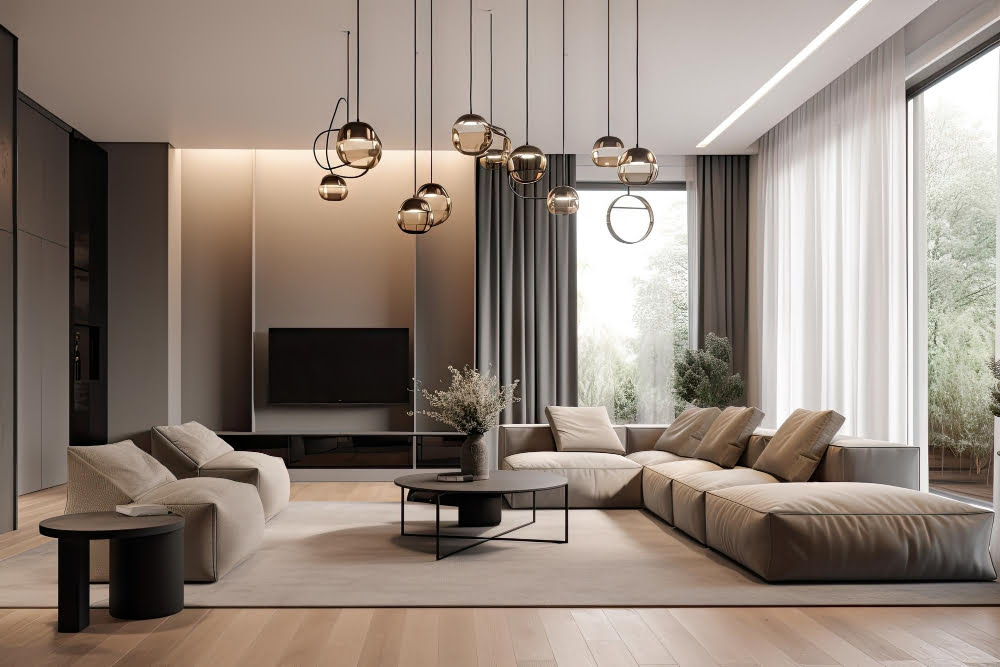
Each type has its unique features and benefits that can enhance your home’s ambiance. Some of the most popular types of pendant lights include mini pendants, multi-light pendants, drum pendants, globe pendants, lanterns or cage-style fixtures.
Mini-pendant lights are perfect for small spaces such as kitchen islands or breakfast nooks. They come in a variety of styles and colors that can complement any decor style.
Multi-light pendant fixtures feature multiple bulbs suspended from a single canopy creating an eye-catching focal point above dining tables or living room seating areas.
Drum-shaped shades offer soft diffused light while adding texture to space with their fabric coverings.
Globe-shaped fixtures provide ambient lighting by casting light evenly throughout the room while also making a statement with their unique shapes and designs.
Lanterns or cage-style fixtures add character to entryways and hallways by providing both task lighting as well as decorative appeal.
Choosing the right type of fixture is essential when selecting your ideal pendant light design.
Selecting the Right Size
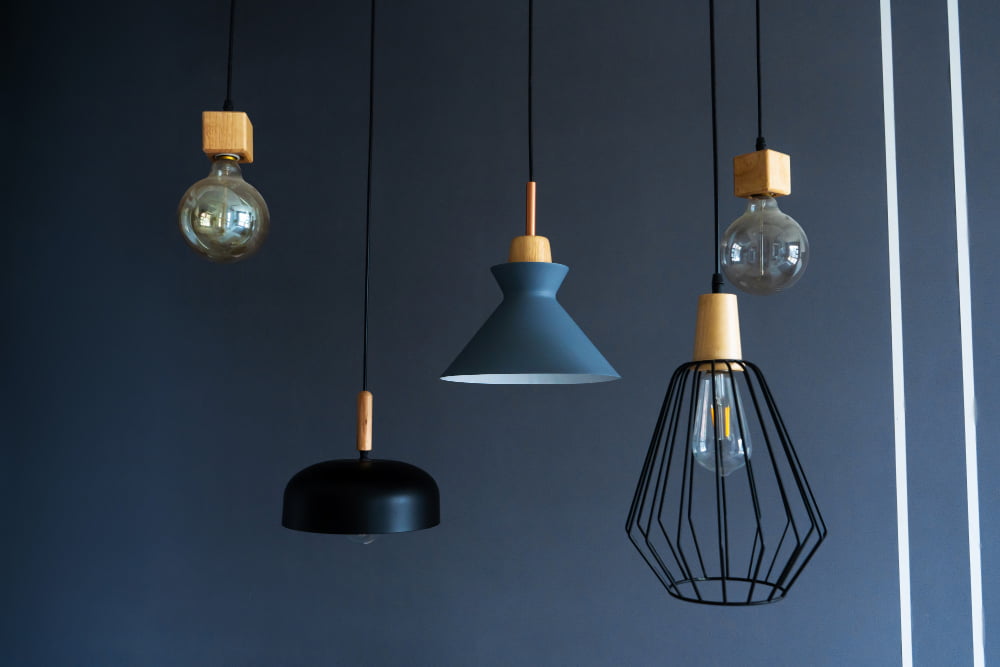
A fixture that’s too small will look out of place and won’t provide adequate lighting, while one that’s too large can overwhelm your space and make it feel cramped. To determine the appropriate size for your pendant light, consider the height of your ceiling and the room’s dimensions.
For high ceilings or larger rooms with ample space above furniture pieces like dining tables or kitchen islands, you’ll want to choose a larger fixture with more presence. On average, these fixtures should be around 12-20 inches in diameter but can go up to 30 inches depending on how much visual weight you want them to carry.
On lower ceilings or smaller spaces such as hallways or entryways where there isn’t much clearance between furniture pieces and walls – opt for smaller pendants ranging from six inches in diameter up until ten inches maximum.
Choosing the Appropriate Shape
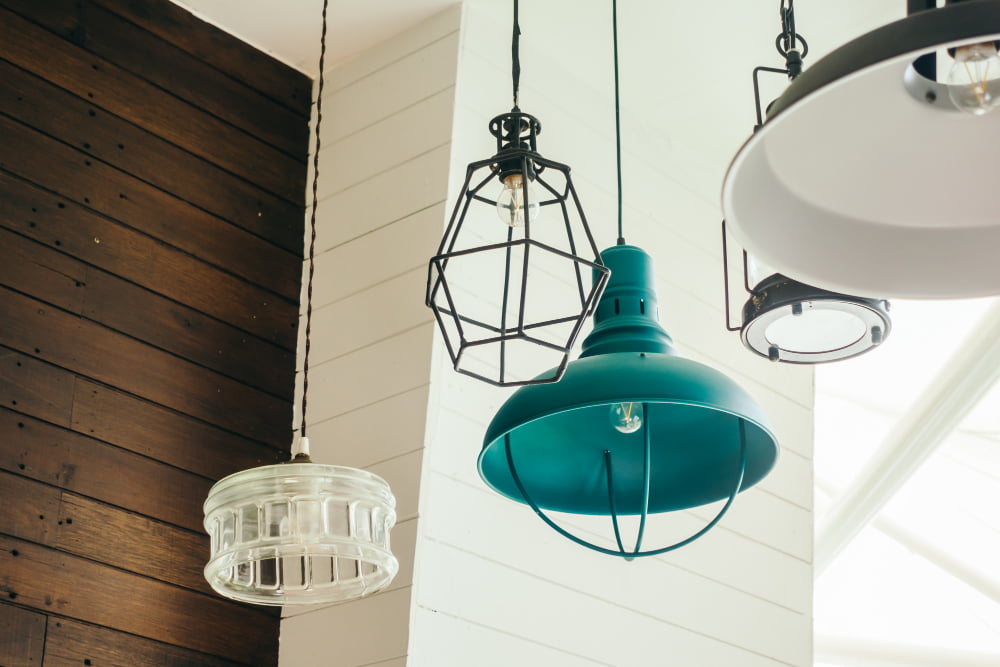
First and foremost, you want to make sure that the shape of your pendant light complements the overall style of your room. For example, if you have a modern or contemporary space with clean lines and minimalistic decor, then geometric shapes like squares or rectangles may be more suitable.
On the other hand, if you have a traditional or rustic-style home with warm colors and natural materials such as wood or stone accents, then round-shaped pendants made from materials like glass or metal can add an elegant touch.
Another factor to consider is how much illumination you need in each area of your room. If you’re looking for task lighting over a kitchen island where food preparation takes place regularly; choose pendants that provide ample light without being too harsh on eyesight.
Choosing an appropriate shape depends on various factors such as personal preference and existing decor styles in different rooms throughout one’s home.
Matching Pendant Lights to Room Styles
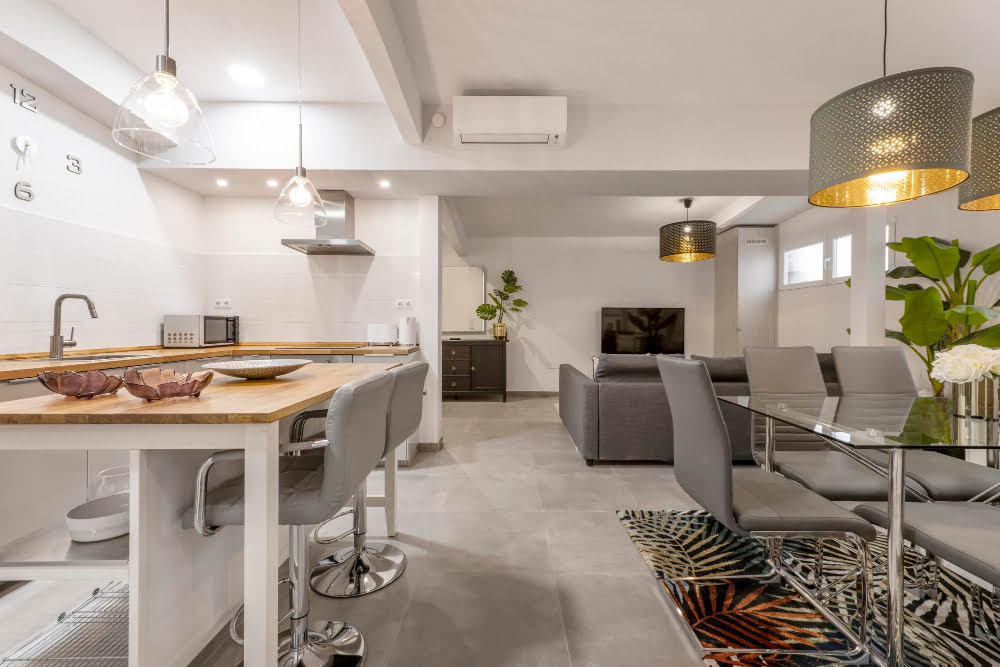
First, think about the overall ambiance of the space. Is it modern and sleek or rustic and cozy? This will help guide you in selecting a pendant light that complements the existing decor.
For example, if your room has an industrial feel with exposed brick walls and metal accents, consider choosing a pendant light with an edgy design featuring raw materials like concrete or iron. On the other hand, if your space is more traditional with warm wood tones and soft fabrics such as linen or velvet upholstery on furniture pieces then opt for something classic like crystal chandeliers.
Selecting the Proper Material
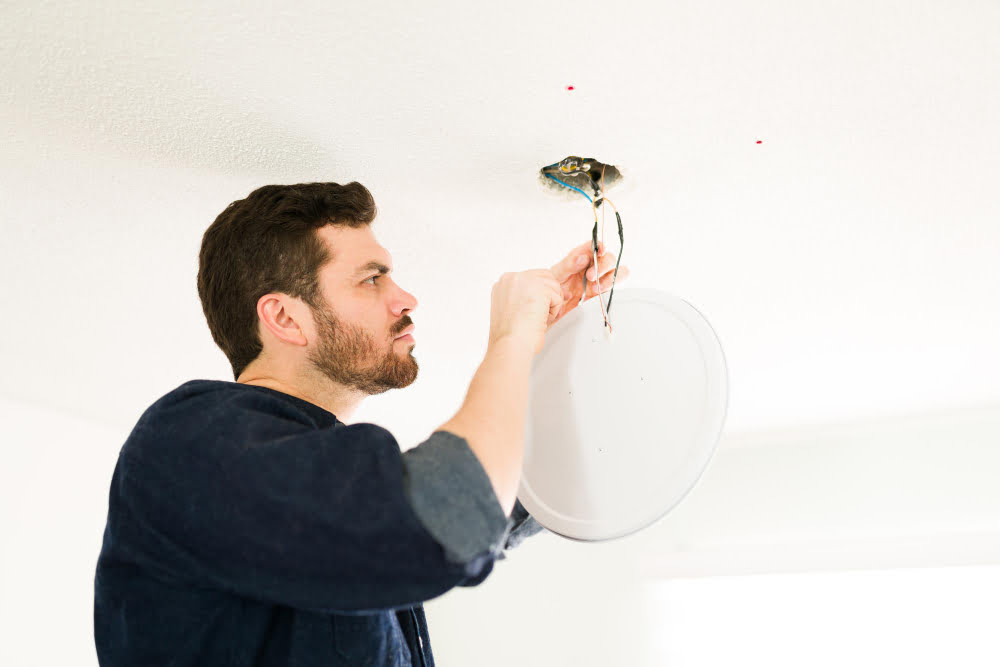
First and foremost, think about the overall style of your home. If you have a modern or contemporary space, materials like glass or metal can work well.
On the other hand, if you have a more traditional home decor style, materials like wood or fabric may be better suited.
Another factor to consider is durability and maintenance requirements. For example, if you’re installing pendant lights in an area that’s prone to moisture such as above kitchen islands or bathroom vanities then choosing waterproof materials such as plastic resin would be ideal.
Lastly but not least important is cost-effectiveness; some materials are more expensive than others so make sure that whatever material choice made fits within budget constraints without compromising on quality.
Coordinate Colors and Finishes
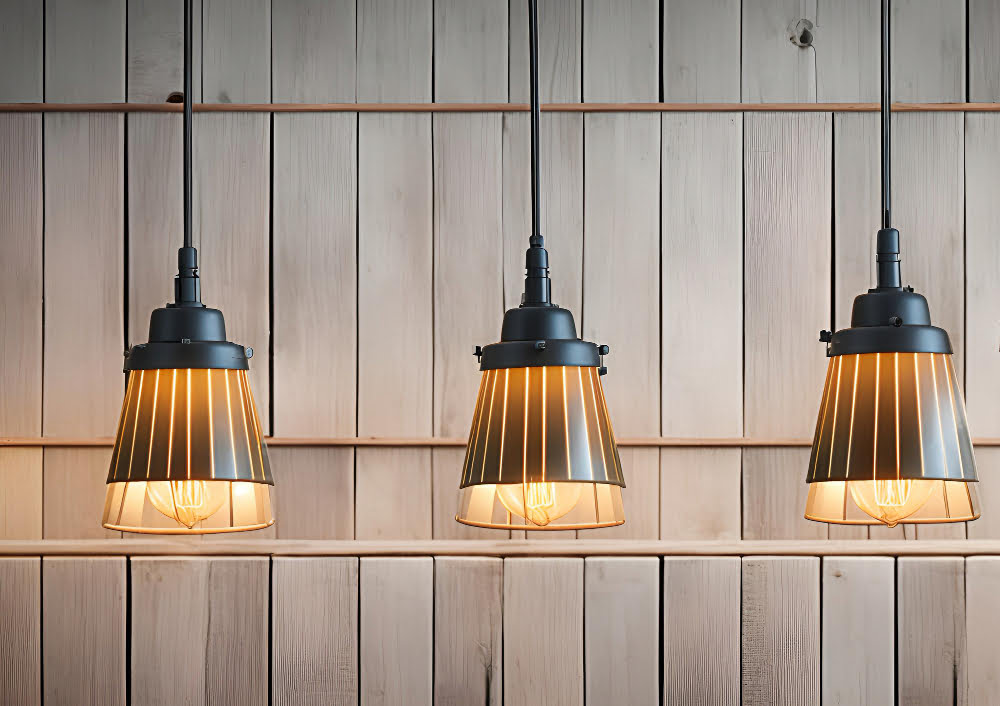
Pendant lights come in a variety of materials such as glass, metal, wood or fabric. Each material has its unique texture and finish that can complement your existing decor or create contrast for an eye-catching effect.
To coordinate colors effectively, consider the color scheme of your room. If you have a neutral palette with beige walls and white furniture, opt for pendant lights with warm metallic finishes like brass or copper to add warmth to space.
On the other hand, if you have bold-colored walls like red or blue in your room’s design scheme; choose pendant light fixtures that are more subdued in color but still provide enough contrast against the wall’s hue.
Another way to coordinate colors is by using complementary hues on opposite sides of the color wheel. For example: pair green pendants with pink accents; orange pendants with blue accents; yellow pendants paired up against purple accessories etcetera.
Balancing Fixture Proportions
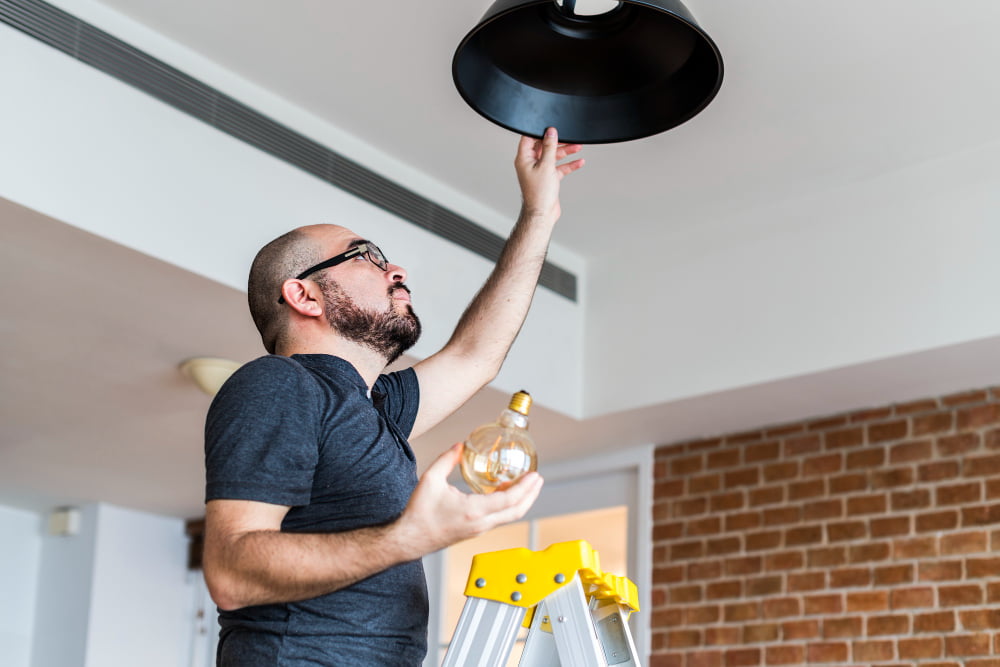
Choosing the right size is crucial in achieving a balanced and harmonious look for your space. A common mistake that homeowners make is selecting fixtures that are too small or too large for their room’s proportions, which can throw off the entire design scheme.
To balance fixture proportions, consider the height of your ceiling and the dimensions of your room when choosing pendant lights. For example, if you have high ceilings or a spacious living area, opt for larger fixtures with wider shades to fill up more visual space without overwhelming other elements in the room.
On the other hand, if you have low ceilings or limited floor space in smaller rooms like bathrooms or hallways; choose compact pendants with narrow shades that won’t take up much visual real estate but still provide adequate illumination.
Height Considerations

The ideal height for pendant lights depends on various factors such as the room’s ceiling height, furniture placement, and lighting needs. Pendant lights should be hung at a comfortable eye level to avoid glare and ensure proper illumination.
For standard 8-foot ceilings, we recommend hanging pendant lights between 30-36 inches above the surface they are illuminating. For higher ceilings (10 feet or more), you may need to adjust accordingly by adding an extra three inches per foot of ceiling height.
It’s also essential to consider how much clearance you need below your pendants if they’re hanging over tables or countertops where people will be sitting or standing underneath them. A general rule of thumb is that there should be at least 30 inches between the bottom of your fixture and any surface beneath it.
Pendant Light Positioning
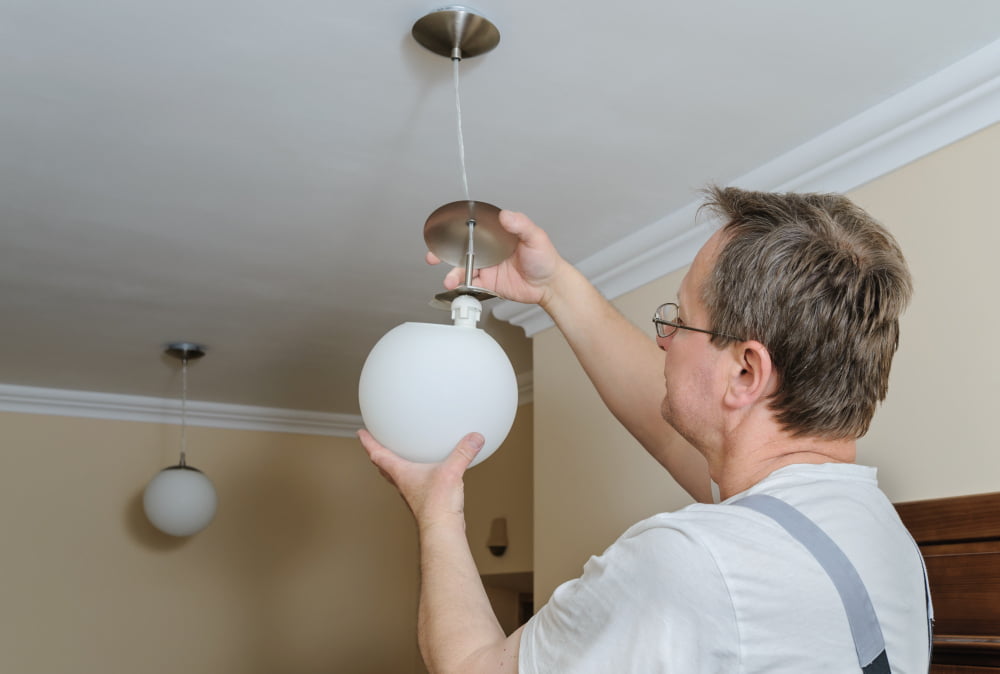
The height at which you hang your pendant light can significantly impact its overall effect on the room. A general rule of thumb is to hang a pendant light 30 inches above a table or countertop and at least seven feet above the floor in an open area.
However, this rule may vary depending on factors such as ceiling height and fixture size. For example, if you have high ceilings or a large fixture, hanging it too low can make the room feel cramped and cluttered.
On the other hand, if your ceiling is low or your fixture small in size, hanging it too high can make it appear insignificant and out of place. It’s crucial to find that sweet spot where both functionality and aesthetics are met.
When positioning multiple pendants over an island or dining table ensure they are evenly spaced apart from each other while still maintaining balance with their surroundings.
Layering Pendant Lights
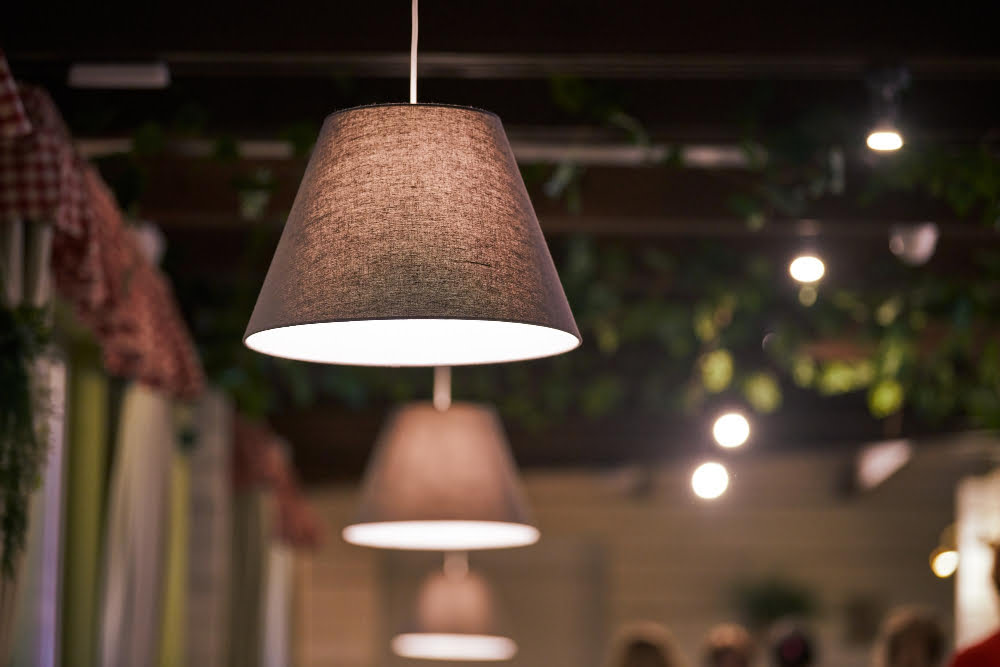
By using multiple fixtures at different heights, you can create a warm and inviting atmosphere that draws the eye around the room. When layering pendant lights, it’s essential to consider both function and aesthetics.
For example, if you’re placing pendants over a kitchen island or dining table, make sure they provide enough light for tasks such as cooking or reading menus.
To achieve an effective layered look with pendant lights in any room of your home, start by selecting fixtures that complement each other in terms of style and finish but have varying shapes or sizes. You can also mix materials like glass with metal finishes for added interest.
When positioning your pendants for layering purposes ensure there is adequate space between them so they don’t compete visually while still providing ample illumination throughout the space.
Mixing and Matching Options
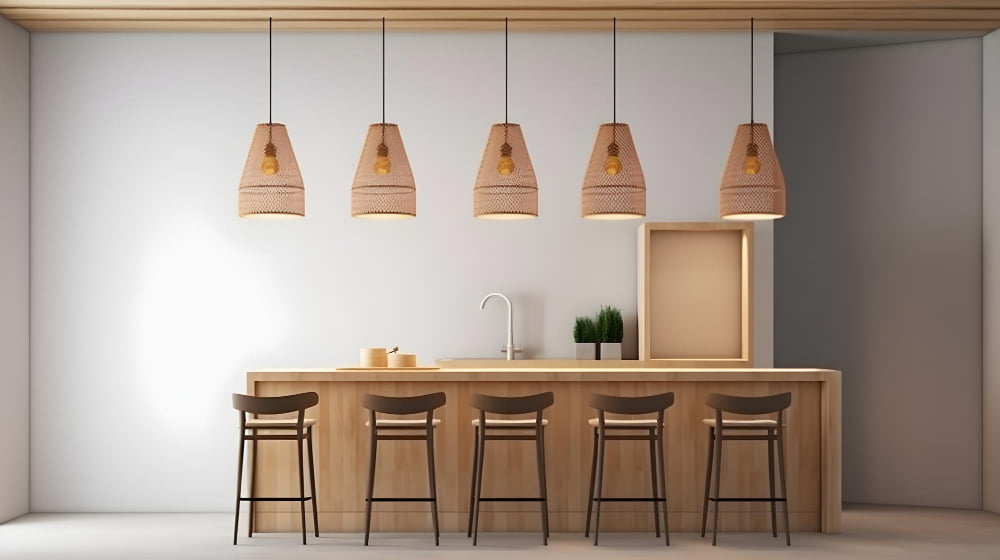
However, it can be challenging to get the right balance between different styles, shapes, colors, and finishes. One approach is to use fixtures that share a common trait such as color or material.
For example, you could mix copper pendants with brass accents or black metal shades with gold interiors.
Another option is layering pendant lights of different sizes or shapes in the same room for an eclectic look. You can also experiment with mixing modern designs with vintage-inspired pieces for a unique blend of old and new.
However, there are some do’s and don’ts when it comes to mixing lighting fixtures effectively. Do consider the overall style of your home before selecting contrasting elements; otherwise they may clash instead of complement each other well.
Don’t go overboard by using too many different styles at once; this will create confusion rather than harmony in your space.
Use Fixtures That Share a Common Trait
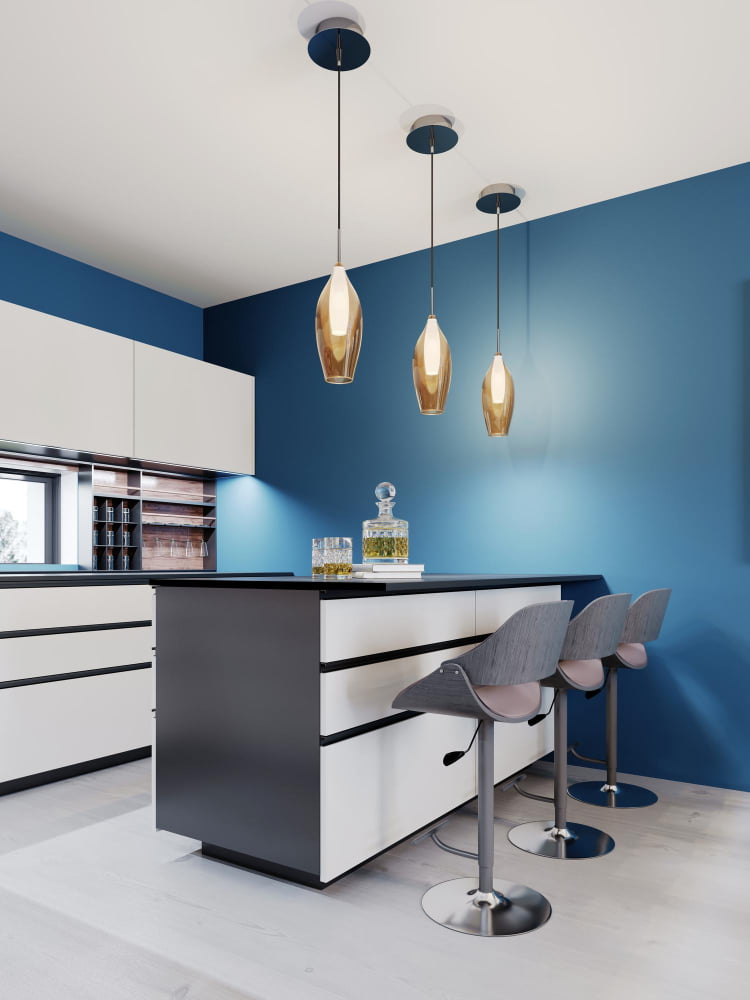
This could be anything from color and finish to shape or material. By selecting pendant lights with similar features, you can create an effortless flow throughout your space.
For example, if you have a modern kitchen with stainless steel appliances and hardware, consider choosing pendant lights in brushed nickel or chrome finishes. Alternatively, if your home has rustic elements such as exposed brick walls or wooden beams, opt for pendants made from natural materials like wood or rattan.
Using fixtures that share a common trait doesn’t mean they all need to match exactly; instead aim for complementary pieces that work together harmoniously. For instance: If you have two different styles of pendants over your dining table but both are made of glass – this creates unity through the shared feature while still allowing each fixture its own unique style.
Mixing and Matching Lighting Fixture Do’s
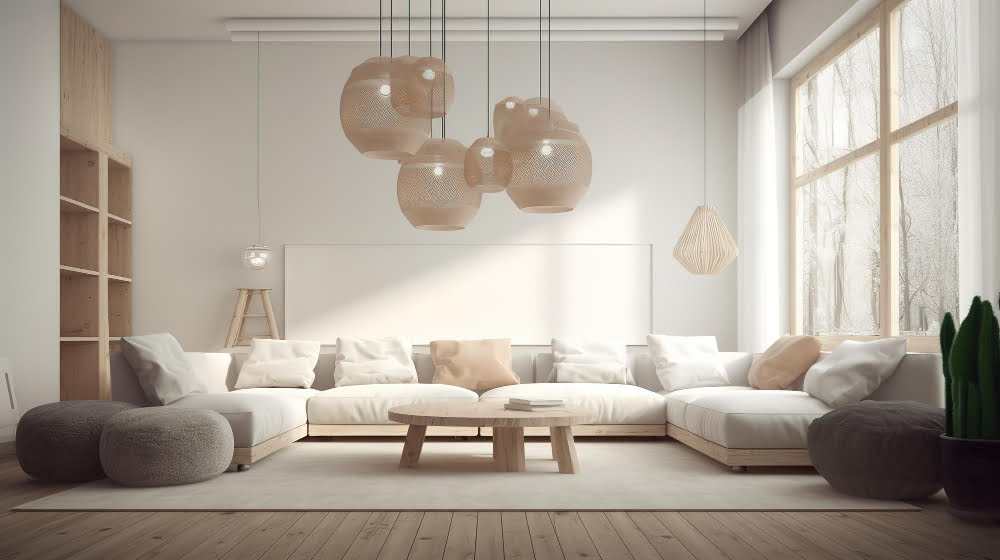
Firstly, consider using fixtures that share a common trait such as color or material. This will help create cohesion between the different lighting elements in your space.
Secondly, try layering pendant lights of different sizes and shapes to add depth and interest to your room. For example, you could hang three small pendants at varying heights above an island benchtop or dining table.
Thirdly, don’t be afraid to mix brands when selecting lighting fixtures for your home. Different manufacturers offer unique styles that can complement each other well when combined thoughtfully.
Lastly, experiment with textures by incorporating materials like glass or metal into your design scheme for added visual appeal.
Mixing and Matching Lighting Fixture Don’ts
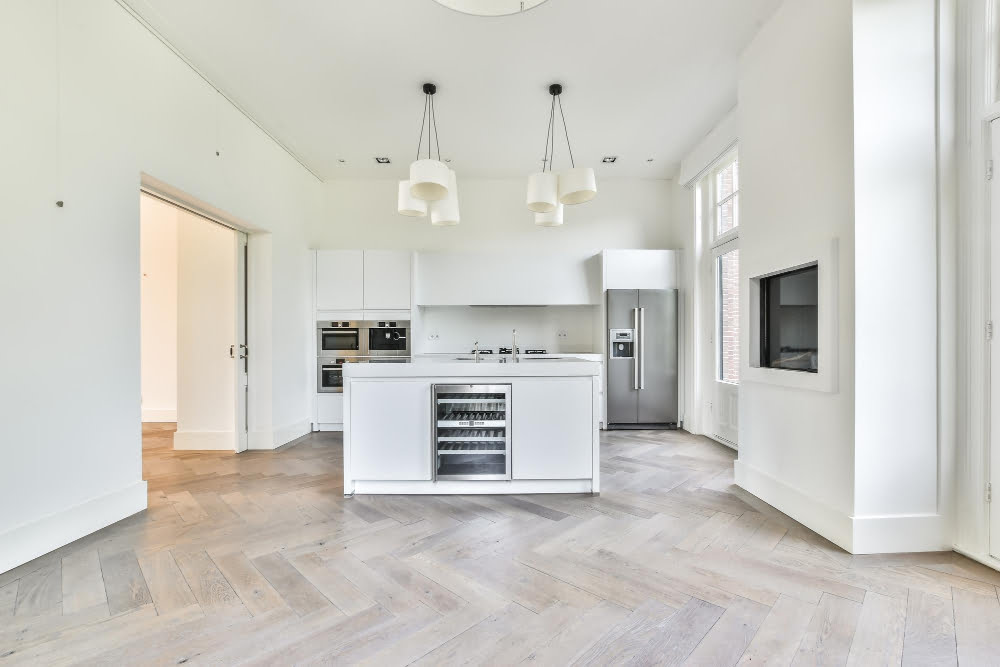
Here are some “don’ts” when it comes to mixing and matching lighting fixtures:.
1. Don’t mix too many styles: While it’s okay to mix different types of pendant lights, such as industrial with modern or traditional with bohemian, try not to go overboard.
Too many conflicting styles can make the room look cluttered.
2. Don’t use fixtures that clash: Be mindful of the colors and finishes you choose for your pendant lights.
If they clash with each other or other elements in the room, it will create an unpleasant visual experience.
3. Don’t forget about scale: Mixing large pendants with small ones may seem like a good idea in theory but could end up looking awkward if not done correctly.
4. Don’t ignore functionality – It’s important that all light sources serve their intended purpose while also complementing one another aesthetically.
Lighting Control Features

These features allow you to adjust the brightness and color temperature of your pendant lights according to your needs and preferences. For instance, dimmer switches can help create a cozy ambiance in your living room or bedroom while providing enough light for reading or working.
Smart lighting systems are another popular option that allows you to control multiple fixtures from a single device such as a smartphone or tablet. With these systems, you can set schedules for turning on/off your lights automatically, change colors based on mood or activity type (e.g., movie night), and even integrate with voice assistants like Amazon Alexa or Google Assistant.
Energy-Efficient Pendant Lights

Not only does it help reduce your carbon footprint, but it also saves you money on utility bills. Fortunately, there are plenty of energy-efficient pendant lights available that can provide the same level of illumination as traditional fixtures while using less power.
LED bulbs are an excellent option for those looking to save on electricity costs and reduce their environmental impact. They use up to 80% less energy than incandescent bulbs and last much longer too! Plus, they come in various colors and styles that can match any decor.
Another way to ensure your pendant lights are eco-friendly is by selecting fixtures made from sustainable materials such as bamboo or recycled glass. These options not only look great but also contribute positively towards the environment.
When shopping for new lighting fixtures always check if they have Energy Star certification which guarantees high-quality performance with low power consumption levels.
Safety and Installation Tips
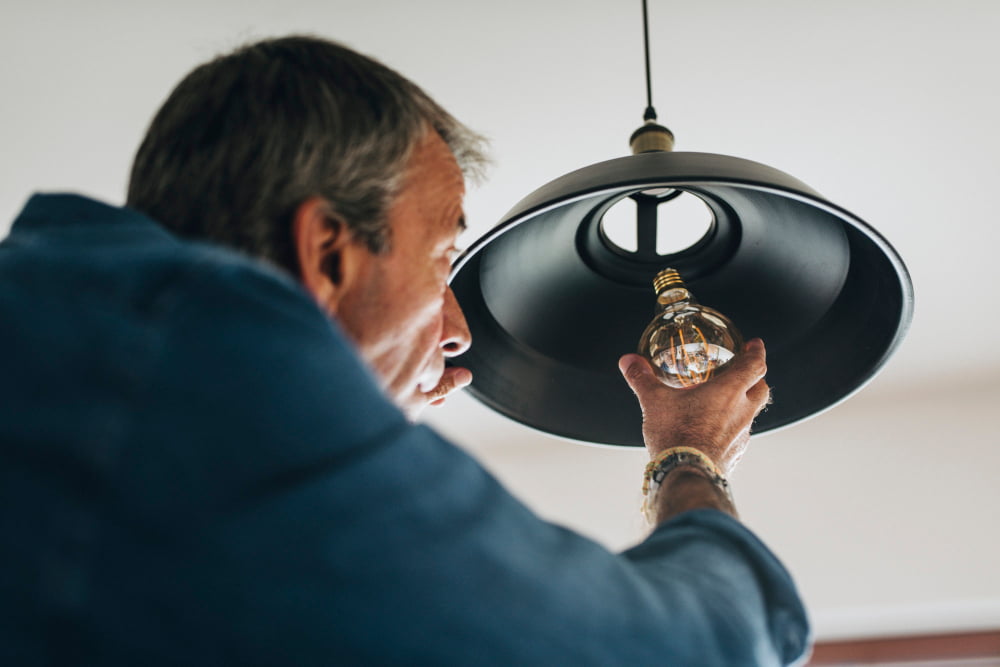
Before you begin the installation process, make sure that you have turned off the power supply to avoid any electrical hazards. If you’re not confident in your ability to install the fixture yourself, consider hiring a professional electrician.
It’s also important to choose high-quality materials and fixtures that meet safety standards. Look for products with UL or ETL certification marks as these indicate that they have been tested and approved for safe use.
Another thing to keep in mind is proper positioning of your pendant light fixtures. Make sure they are installed at an appropriate height so that people won’t bump their heads on them while walking around the room.
Lastly, ensure proper illumination by using bulbs with appropriate wattage ratings and selecting shades or globes made from materials designed for lighting purposes (not flammable).
Ensuring Proper Illumination
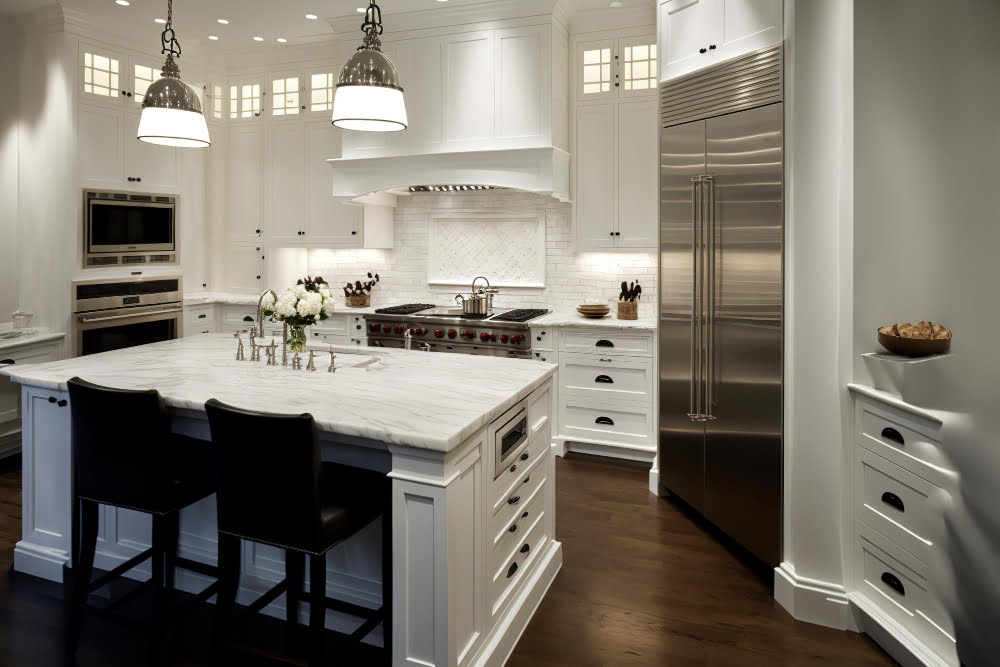
Proper lighting can make a significant difference in how a room looks and feels. To achieve optimal lighting, consider the size of your room and its function.
For example, if you’re installing pendant lights over a dining table or kitchen island, make sure they are positioned at an appropriate height so that they don’t obstruct views or create glare.
Think about layering different types of light sources to create depth and ambiance in your space. Pendant lights work well as task lighting but may not be sufficient on their own for general illumination purposes.
To ensure proper illumination with pendant lights:.
- Consider using dimmer switches to adjust brightness levels according to mood or activity.
- Use multiple fixtures instead of relying on one central fixture.
- Choose bulbs with appropriate wattage based on the size of the fixture and intended use.
- By following these tips for ensuring proper illumination with pendant lights, you’ll be able to enjoy both functional and beautiful lighting in any room!
Use a Variety of Brands, Colors & Textures
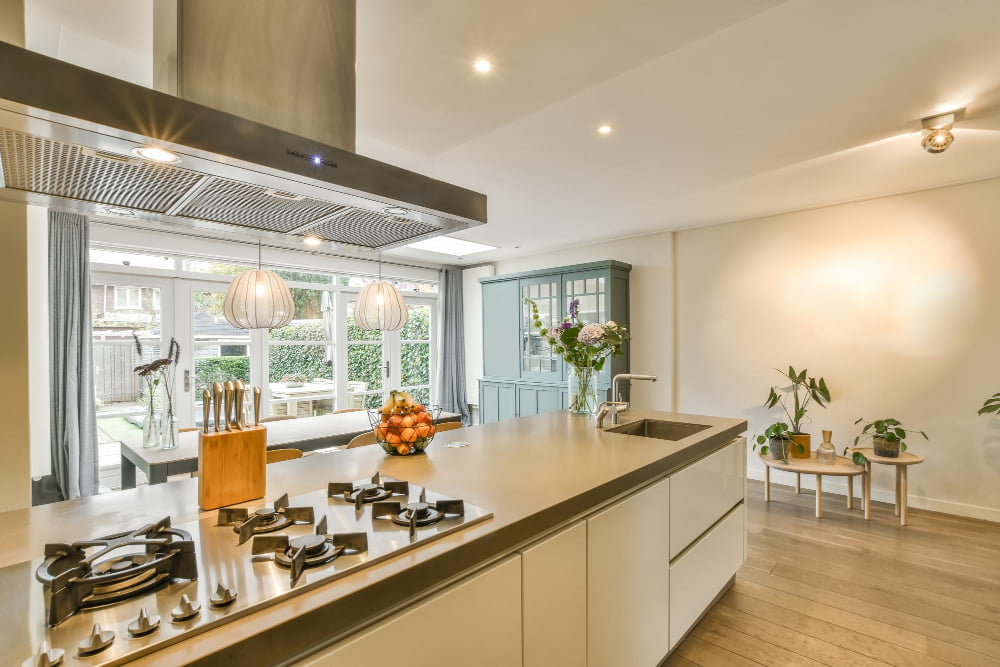
Combining various styles can create a unique look that adds character and depth to your space. However, it’s essential not to go overboard with too many contrasting elements as this can result in a cluttered or chaotic appearance.
To achieve the perfect balance of variety without overwhelming your design scheme, start by selecting one dominant color or texture for your pendant lights. Then add accents of complementary hues or materials through other lighting fixtures such as table lamps or wall sconces.
Another way you can incorporate diversity is by using different shapes of pendants within the same room while keeping their finishes consistent. For example: if you have two round-shaped pendants above an island counter in brushed nickel finish then use three cylindrical-shaped ones above the dining table with similar finishing.
By incorporating these tips into your interior design plan when choosing pendant lights for any room in your home will help create an inviting atmosphere that reflects both style and functionality!.
FAQ
Do pendant lights have to match chandelier?
No, pendant lights do not have to match chandeliers, but they should share common features.
Can you mix pendant lights?
Yes, you can mix pendant lights, but it is recommended to combine two to four finishes in each room, especially for those new to lighting, and it’s essential to get inspired before purchasing.
Is it OK to mix light fixture finishes?
Yes, it is OK to mix light fixture finishes, but it is recommended to stick with a maximum of three finishes for a balanced look.
How do I choose the right size pendant light?
To choose the right size pendant light, multiply the room’s height by 2.5 and 3, and use the resulting two numbers as a good range for pendant heights.
What factors should be considered when coordinating pendant lights with the overall room design?
When coordinating pendant lights with the overall room design, consider factors such as the room’s size, style, purpose, color scheme, and existing light sources.
How can one effectively balance pendant light styles for a cohesive aesthetic?
To effectively balance pendant light styles for a cohesive aesthetic, consider coordinating materials, colors, and designs while maintaining a consistent theme throughout the space.
What is the ideal spacing and positioning for pendant lights in a room layout?
Ideal spacing and positioning for pendant lights in a room layout involves placing them approximately 24-30 inches apart, with their height at 12-20 inches above a table or surface.
Recap:




